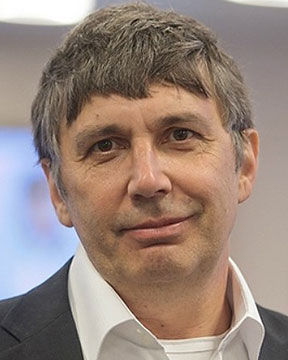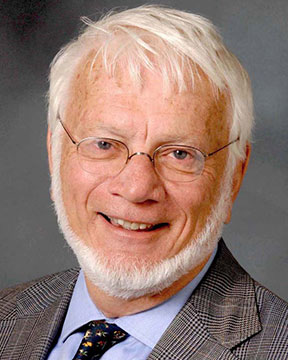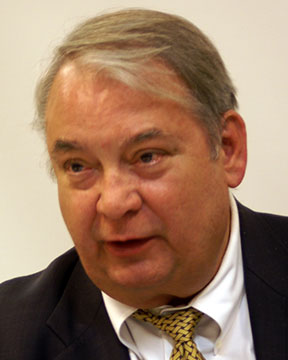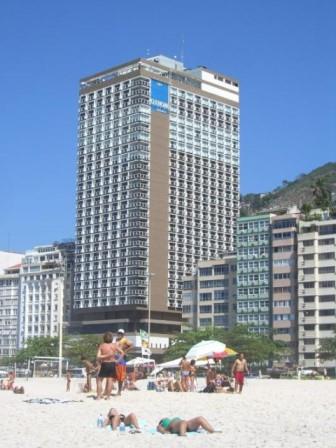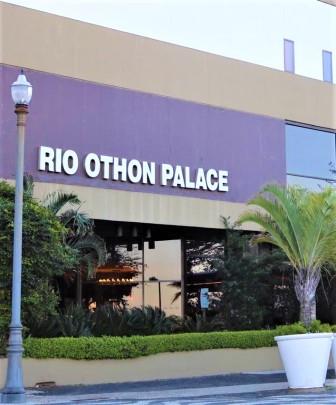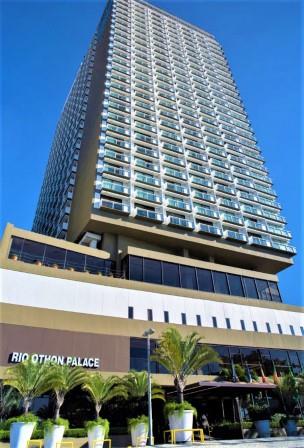ORALS
SESSION: AdvancedMaterialsTuePM2-R6
| 4th Intl. Symp. on New and Advanced Materials and Technologies for Energy, Environment and Sustainable Development |
| Tue Nov, 6 2018 / Room: Guaratiba (60/2nd) | |
| Session Chairs: Ephraim Eliav; Raphael Semiat; Session Monitor: TBA |
17:10: [AdvancedMaterialsTuePM212]
Inkjet Printing Nano-functionalization of Energy Materials Rumen
Tomov1 ; T
Mitchell Williams
1 ; Simon
Hopkins
2 ;
Vasant
Kumar3 ; Bartek A.
Glowacki
1 ;
1University of Cambridge, Cambridge, United Kingdom;
2Research Fellow, Geneva, Switzerland;
3University of Cambridge, Cambridge, United Kingdom ;
Paper Id: 393
[Abstract] The future of the international accord on mitigating the impact of climate change is linked to the successful implementation of nano-technology. The latter is strongly dependent on finding commercially viable methods for nano-functionalization of the energy related materials. Drop-on-demand inkjet printing methods combining scalability and low equipment cost with high-resolution ink delivery have been proven a feasible solution in various areas: 2D functionalization — (i) fabrication of multifilamentary superconducting YBCO structures by inkjet printing of a low-fluorine YBCO precursor solution on SS/ABAD-YSZ/CZO substrates creating a multifilamentary structure by an inverse technique (Jc of up to 3 MA cm-2 at 77 K) [1]; (ii) in situ fabrication of conductive silver coatings without additional heat treatment from micron-sized elongated silver flakes [2].<br />3D functionalization — Composite solid oxide fuel cells LSCF/CGO cathodes were nano-engineered via "dual" inkjet printing infiltration. The structure was found to extend the active three-phase boundary and to promote adsorption/dissociation/surface exchange reactions. Electrochemical impedance tests showed a reduction in the polarisation resistance of between 1.5 and 7.0 times.
References:
[1] S.C. Hopkins, T.B. Mitchell-Williams, D.R. Vanden Bussche, A. Calleja, V.R. Vlad, M. Vilardell, X. Granados, T. Puig, X. Obradors, A. Usoskin, M. Soloviov, M. Vojenciak, F. Gomory, I.V. Driessche, M. Backer, B.A. Glowacki, IEEE Trans. Appl. Supercond., 26 (2016) 1-5.\n[2] C. Nash, Y. Spiesschaert, G. Amarandei, Z. Stoeva, R.I. Tomov, D. Tonchev, I. Van Driessche, and B.A. Glowacki, J. of Electronic Materials 44 (2015) 497-510.\n[3] R.I. Tomov, T.B. Mitchel-Williams, R. Maher, G. Kerherve, L. Cohen, D.J. Payne, R.V. Kumar and B.A. Glowacki, J. Mater. Chem. A, 6 (2018) 5071-5081.
17:35 Break
SESSION: BatteryMonAM-R9
| 5th Intl. Symp. on Sustainable Secondary Battery Manufacturing and Recycling |
| Mon Nov, 5 2018 / Room: Asian (60/3rd) | |
| Session Chairs: Vasant Kumar; Miles Freeman; Session Monitor: TBA |
11:20: [BatteryMonAM01] Keynote
Lead-acid Battery Recycling - A Different Way Athan
Fox1 ;
Miles
Freeman1 ;
Robert
Liu1 ;
Johdie
Harris1 ;
Vasant
Kumar2 ;
1Aurelius Environmental, Dudley, United Kingdom;
2University of Cambridge, Cambridge, United Kingdom ;
Paper Id: 426
[Abstract] The lead-acid battery (LAB) market is forecast to reach $84 billion USD by 2025.<sup>1</sup> Despite intense competition from alternative and emerging energy storage solutions, LABs continue to deliver the most proven, low-cost, safe and affordable option for electrical energy storage. Indeed, LABs are used widely in automobiles (for starting, lighting and ignition), traction and heavy industry (for example electric forklifts and trucks), telecommunications, emergency lighting, renewable energy systems, medical equipment, railway backup systems, oil and gas exploration, and more.<br /><br />The recycling of LABs via current methods is energy intensive and wasteful. In some parts of the world it produces "smelter smoke", a toxic mixture of sulphur dioxide, nitrogen dioxide and very often lead metal particles. For this reason, although LABs are the world's most successfully recycled commodity product,<sup>2</sup> and a perfect example of a successful multi-million tonne circular economy, the incumbent recycling processes are in dire need of improvement and technological innovation.<br /><br />At Aurelius, our aim is to revolutionise the art of recycling through science, ethical practice, sustainability and technology. Our vision is a web of industries, where one stream's waste is another stream's feed-stock: bridging linear and wasteful processes to create circular, energy efficient, non-polluting, zero waste industries. Our stepping stone towards this vision is a technology for the recycling of LAB paste.<br /><br />Invented in 2006 by Professor Vasant Kumar at the University of Cambridge,<sup>3-5</sup> UK, the technology was licensed exclusively in 2016 to Aurelius for further development, scaling up and commercialisation. Our piloting efforts are funded by two Innovate UK awards and a Horizon 2020 (Phase 2) SME grant. To date, we have raised more than 2 million USD in grant funding, while our annual turnover from the collection, dismantling and processing of more than 10,000 tonnes of LAB scrap per year is also used to fund our technology and innovation.<br /><br />The patented hydrometallurgical process, branded as Fenix<sup>Pb</sup>, brings about a critical improvement to the lead recycling industry.<sup>6</sup> It enables conversion of spent battery paste to leady oxide (Pb/PbO) without producing or handling an intermediate ingot, and without utilising electrowinning. In fact, our process reduces the carbon footprint by 80-89%; eliminates noxious gases (including sulphur dioxide) at no added cost; reduces slag by more than 90%; and produces energy (this is because a key stage in the process is highly exothermic, releasing rather than consuming energy).<br /><br />Our leady oxide is also a step-change in lead-acid battery technology. Laboratory tests carried out at the University of Cambridge have shown that batteries produced from our leady oxide have a 30% improved energy density. This innovation is largely due to the particle size; indeed, our advanced leady oxide is a nano-crystalline solid. Moreover, our process delivers a scalable means of controlling accurately the free metallic lead content (%Pb) and ratio between the alpha and beta phases of the oxide - enabling battery manufacturers to fine-tune their batteries' active materials dependant on its properties and applications.
References:
1) Lead Acid Battery Market Size & Trend Analysis By Product (SLI, Stationary, Motive), By Construction Method, By Application (Automotive, UPS, Telecommunication, Electric Bikes, Transport Vehicles), By Region And Segment Forecasts 2014 - 2025, Report ID 4076564, Research & Markets, January 2017 (URL: https://www.researchandmarkets.com/research/kvf4lb/lead_acid_battery)\n2) Lead Action 21, Environmental and social responsibility for the 21st Century, International Lead Association, November 2015 (URL: https://www.ila-lead.org/UserFiles/File/ILA9927%20FS_Recycling_V08.pdf)\n3) M.S. Sonmez, R.V. Kumar, Hydrometallurgy, 95 (2009), 82-86.\n4) M.S. Sonmez, R.V. Kumar, Hydrometallurgy, 95 (2009), 53-60.\n5) J. Yang, R.V. Kumar, D.P. Singh, J. Chem. Technol. Biotechnol., 87 (2012), 1480-1488.\n6) A. Fox and M. Freeman, SciTech Europa Quarterly, 28 (2018), 118-121.
SESSION: BatteryMonPM1-R9
| 5th Intl. Symp. on Sustainable Secondary Battery Manufacturing and Recycling |
| Mon Nov, 5 2018 / Room: Asian (60/3rd) | |
| Session Chairs: Claudio Capiglia; Jim Zheng; Session Monitor: TBA |
14:00: [BatteryMonPM105]
NovoPb - A Complete Lead Recycling System to Enhance Brazilian Sustainability Deise
Menezes Santos1 ; Yandiara
Larissa Barros
2 ; Marcos Benedito
Jose Geraldo De Freitas
3 ; André Gustavo
De Sousa Galdino
4 ; Matheus
Carvalho
5 ; Francklin Jonas
De Paula
6 ;
Vasant
Kumar7 ;
1Universidade Federal do Espírito Santo, Vitoria, Brazil;
2Instituto Federal do Espirito Santo, Vitoria, Brazil;
3Universidade Federal do Espirito Santo, Vitoria, Brazil;
4Instituto Federal do Espírito Santo, Vitória, Brazil;
5Instituto Federal de Minas Gerais, Governador Valadares, Brazil;
6Faculdade Pitagoras, Governador Valadares, Brazil;
7University of Cambridge, Cambridge, United Kingdom ;
Paper Id: 385
[Abstract] Pyrometallurgy lead-acid battery recycling causes pollution and is energy-intensive. This research aims to implement an alternative hydrometallurgical process of recycling lead-acid battery paste, NovoPb, by developing processes to make it economically viable in the current market and to ensure the quality of the newly recycled batteries in a 1 ton capacity pilot plant at Minas Gerais - Brazil.<br />NovoPb is based on a paste-to-paste route using a biomass source, citric acid. The new intermediary lead compound is calcined at a much lower temperature (340°C) than usual smelted lead (1200°C), saving energy and reducing hazardous gas emissions such as Pb and SOx, to directly generates nanostructured PbO for battery paste. <br />The process to be deployed in Brazil has as a first challenge the battery scrap characterisation, to measure the use of reagents per ton of scrap, which is not standard protocol in the current pyrometallurgical process. The study of the characterisation forms will be carried out in the laboratory to define the route to be followed in the pilot plant, which will be built by the British partners.<br />The determination of the optimal reaction conditions will be designed by factorial modelling. The influence of the impurities will be evaluated from a pure standard mixture of the main species that compose the battery paste. The optimization of the pilot process will be carried out by application of artificial neural networks after controlled operation.<br />This research is part of the Embrapii project of the Vitoria Innovation Center of the Federal Institute of Espirito Santo, in partnership with the University of Cambridge, Innovate UK, Brazilian companies Tudor MG de Baterias, Antares Reciclagem LTDA and the British company, Aurelius Technology.
References:
1. Zentner LEA, Rond-PHC. Lead contamination among pregnant Brazilian women living near a lead smelter. Int J Gynecol Obstet. 2004;87(2):147-8. \n2. Sun Z, Cao H, Zhang X, Lin X, Zheng W, Cao G, et al. Spent lead-acid battery recycling in China : A review and sustainable analyses on mass flow of lead. Waste Manag [Internet]. 2017;64(1):190-201. Available from: http://dx.doi.org/10.1016/j.wasman.2017.03.007\n3. Zhang W, Yang J, Wu X, Hu Y, Yu W, Wang J, et al. A critical review on secondary lead recycling technology and its prospect. Renew Sustain Energy Rev. 2016;61:108-22. \n4. Kumar RV. LEAD RECYCLING. UNITED KINGDOM; WO 2008/056125 A1, 2008. p. 35. \n5. Sonmez MS, Kumar R V. Leaching of waste battery paste components. Part 1: Lead citrate synthesis from PbO and PbO2. Hydrometallurgy. 2009;95(1-60. \n6. Sonmez MS, Kumar R V. Leaching of waste battery paste components. Part 2: Leaching and desulphurisation of PbSO4 by citric acid and sodium citrate solution. Hydrometallurgy [Internet]. 2009;95(1-6. Available from: http://dx.doi.org/10.1016/j.hydromet.2008.04.019\n7. Ifes. Polo de Inovaio firma convinio com empresas para implantar processo mais limpo na reciclagem de baterias [Internet]. 2018 [cited 2018 Jul 7]. Available from: https://www.ifes.edu.br/noticias/17758-polo-de-inovacao-firma-convenio-com-empresas-para-implantar-processo-mais-limpo-na-reciclagem-de-baterias\n8. Kumar D, Jain VK, Shanker G, Srivastava A. Citric acid production by solid state fermentation using sugarcane bagasse. Process Biochem. 2003;38(12):1731-8. \n9. Li L, Zhu X, Yang D, Gao L, Liu J, Kumar RV, et al. Preparation and characterization of nano-structured lead oxide from spent lead acid battery paste. J Hazard Mater [Internet]. 2012;203-204:274-82. Available from: http://dx.doi.org/10.1016/j.jhazmat.2011.12.021
SESSION: BatteryMonPM1-R9
| 5th Intl. Symp. on Sustainable Secondary Battery Manufacturing and Recycling |
| Mon Nov, 5 2018 / Room: Asian (60/3rd) | |
| Session Chairs: Claudio Capiglia; Jim Zheng; Session Monitor: TBA |
15:15: [BatteryMonPM108]
New Possibilities in the Next Generation of Lead-Acid Batteries Vasant
Kumar1 ;
1University of Cambridge, Cambridge, United Kingdom ;
Paper Id: 382
[Abstract] Lead acid batteries have been well established for over 150 years and remain the largest segment of batteries in use. The market continues to grow in the automotive sector in ICVs, HEVs and EVs, e-bikes, small vehicles, energy storage, and back-up UPS. Furthermore it is well supported by a strong recycling infrastructure which is the envy of all other battery technologies. New recycling methods offer opportunities for controlling the morphology and structure of electrode components in order to derive new energy and power benefits from nanotechnology. New materials offer options for long-life electrode grids that are light and corrosion resistant. A doubling of capacity and rate at a lower cost will offer a paradigm shift in creating new markets for lead-acid batteries.
References:
1. A critical review on secondary lead recycling technology and its prospect, Zhang W, Yang J, Wu X, Hu Y, Yu W, Wang J, Dong J, Li M, Liang S, Hu J, RV Kumar, Renewable and Sustainable Energy Reviews 61:108-122 01 Aug 2016
2. A novel leady oxide combined with porous carbon skeleton synthesized from lead citrate precursors recovered from spent lead-acid battery paste, Hu Y, Yang J, Zhang W, Xie Y, Wang J, Yuan X, Vasant Kumar R, Liang S, Hu J, Wu X; Journal of Power Sources 304:128-135 01 Feb 2016.
3. A novel ultra-fine leady oxide from spent lead pastes for application as cathode of a lead acid battery, D Yang, J Liu, Q Wang, X Yuan, L Li, W Zhang, Y Hu, X Sun, RV Kumar, J Yang, J Power Sources, 257, 27-36, 2014.
4. Electrochemical performance of leady oxide nanostructure prepared by hydrometallurgical leaching and low temperature calcinations of lead paste, J L Gao, J Liu, X Zhu, D Yang, Q Wang, L Li, D He, RV Kumar, J Yang; Electrochem. Soc., 160(9), A 1559-64, 2013.
15:40 Break
SESSION: BatteryMonPM2-R9
| 5th Intl. Symp. on Sustainable Secondary Battery Manufacturing and Recycling |
| Mon Nov, 5 2018 / Room: Asian (60/3rd) | |
| Session Chairs: Thierry Djenizian; Vimalnath Selvaraj; Session Monitor: TBA |
16:20: [BatteryMonPM210]
Dissolution of Spent Lead Acid Battery Paste for Lead Recovery, Bio-sensing and Bio-removal of Residual Pb Ions Vimalnath
Selvaraj1 ;
Vasant
Kumar2 ; Carsten
Schwandt
3 ; Subramanian
Sankaran
4 ;
1University of Cambridge, Cambridge, United Kingdom;
2University of Cambridge, Cambridge, United Kingdom ;
3University of Nizwa, Nizwa, Oman;
4Indian Institute of Science, Bengaluru, India;
Paper Id: 392
[Abstract] A spent lead acid battery consists of four parts, namely the electrolyte, lead and lead alloy components (for example the battery grid and plate), lead paste (the "redox", otherwise known as active, component of the battery) and organics or plastics with weight percentages of 11-30%, 24-30%, 30-40% and 22-30% respectively [1]. The spent battery paste is arguably the most complex component to recycle. It is complex as it is made up of a multitude of materials including PbSO<sub>4</sub> (~60%), which dominates in spent batteries, PbO<sub>2</sub> (~28%), PbO (~9%), free metallic lead (~3%) and a small but substantial concentration of impurities such as iron, antimony, tin and barium [1,2].
The recovery of Pb from spent lead paste is achieved conventionally through pyrometallurgical process requiring relatively elevated temperature (>900°C) for the decomposition of PbSO<sub>4</sub> [3]. The elevated temperature releases SO<sub>2</sub> gas and lead particulates into the environment, raising serious environmental concerns [4]. Hydro-electro metallurgical processing, which has been developed as an alternative, also consumes high energy and uses toxic acids like HBF<sub>4</sub> or H<sub>2</sub>SiF<sub>6</sub> [5]. There is a need for eco-friendly method. In this study, a hydrometallurgical process for complete dissolution of spent lead paste at room temperature has been developed. Post recycling of the dissolved spent lead paste, the residual Pb ions are determined and removed using an eco-friendly biological method.
The complete dissolution of spent lead acid battery paste is achieved in the presence of sodium hydroxide (NaOH), nitric acid (HNO<sub>3</sub>) and hydrogen peroxide (H<sub>2</sub>O<sub>2</sub>). The concentration of Pb ions in the processed water is determined by deploying bacterial cells, Pseudomonas aeruginosa, using differential pulse anodic stripping voltammetry (DPASV). The parameters namely, pH, time, biomass loading and Pb ions concentration were optimized for maximum Pb ions removal by the selected bacterial cells.
References:
1. Zhu, X., Li, L., Sun, X., Yang, D., Gao, L., Liu, J., ... & Yang, J. (2012). Preparation of basic lead oxide from spent lead acid battery paste via chemical conversion. Hydrometallurgy, 117, 24-31.
2. Chen, T. T., & Dutrizac, J. E. (1996). The mineralogical characterization of lead-acid battery paste. Hydrometallurgy, 40(1-2), 223-245.
3. Yanakieva, V. P., Haralampiev, G. A., & Lyakov, N. K. (2000). Desulphurization of the damped lead battery paste with potassium carbonate. Journal of Power Sources, 85(1), 178-180.
4. Sonmez, M. S., & Kumar, R. V. (2009). Leaching of waste battery paste components. Part 1: Lead citrate synthesis from PbO and PbO2. Hydrometallurgy, 95(1-2), 53-60.
5. Yang, J., Kumar, R. V., & Singh, D. P. (2012). Combustion synthesis of PbO from lead carboxylate precursors relevant to developing a new method for recovering components from spent lead-acid batteries. Journal of Chemical Technology & Biotechnology, 87(10), 1480-1488.
SESSION: BatteryTueAM-R9
| 5th Intl. Symp. on Sustainable Secondary Battery Manufacturing and Recycling |
| Tue Nov, 6 2018 / Room: Asian (60/3rd) | |
| Session Chairs: TBA Session Monitor: TBA |
11:45: [BatteryTueAM02]
Hydrometallurgically Generated Nanostructured Lead(II) Oxide from discarded Lead-Acid Batteries: From Laboratory to Pre-Pilot Scale-up Robert
Liu1 ;
Vimalnath
Selvaraj2 ; Marcel
Yiao
2 ;
Vasant
Kumar3 ; Steve
Andrew
1 ; Spencer
Lowe
1 ;
Miles
Freeman1 ;
Johdie
Harris1 ;
Athan
Fox1 ;
1Aurelius Environmental, Dudley, United Kingdom;
2University of Cambridge, Cambridge, United Kingdom;
3University of Cambridge, Cambridge, United Kingdom ;
Paper Id: 429
[Abstract] The recycling of lead-acid batteries (LABs) is currently an energy intensive, inefficient and polluting procedure. An alternative hydrometallurgical recycling route using citric acid(1)(2) has been proven to effectively and efficiently facilitate the extraction of lead from discarded LAB paste material to form an intermediate that can be further processed to be potentially reused again in new LABs.
This citric acid route has been extensively trialled in the laboratory at the University of Cambridge and has recently been through several concurrent iterative experimental trials at a pre-pilot scale at Aurelius Environmental Ltd in Tipton, UK.
The procedure of scaling up any process from the laboratory to pilot and, if successful, to full commercial scale is a journey that is well trodden. The current review paper will seek to describe some of the challenges and successes that has thus far been encountered in scaling up this promising recycling route.
As the author, associates and collaborators attempt to translate what has been shown in the laboratory to a pre-pilot scale, the ultimate aim is to transition to a full pilot scale and beyond in the near future. The progress and future aims of this nascent technology will be outlined and discussed in order to inform and educate a wider audience of this exciting and sustainable recycling method.
References:
[1] Sonmez MS, Kumar RV. Leaching of waste battery paste components. Part 1: Lead citrate synthesis from PbO and PbO2. Hydrometallurgy. 2009;95(1-2):53-60.
[2] Sonmez MS, Kumar RV. Leaching of waste battery paste components. Part 2: Leaching and desulphurisation of PbSO4 by citric acid and sodium citrate solution. Hydrometallurgy. 2009;95(1-2):82-6.
[3] Yang J, Kumar RV, Singh DP. Combustion synthesis of PbO from lead carboxylate precursors relevant to developing a new method for recovering components from spent lead-acid batteries. Journal of Chemical Technology & Biotechnology. 2012;87(10):1480-8.




